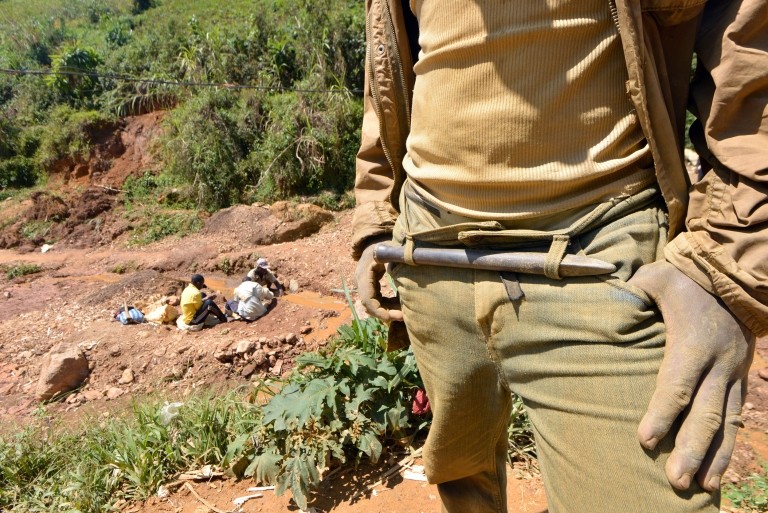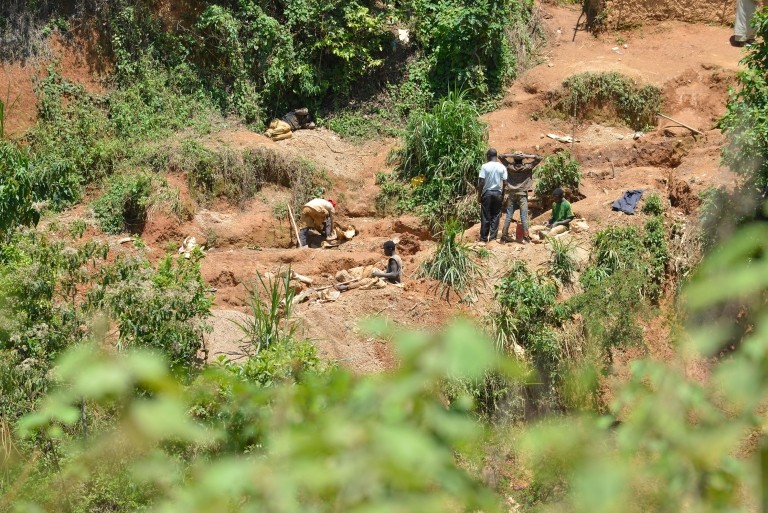Blog
Artisanal and small-scale cobalt mining and the importance of formalization: An explainer with Pact’s Mickaël Daudin

A key component in electric car and other rechargeable batteries, the mineral cobalt has recently taken center stage as a commodity critical to the global energy transition. Like other minerals used in everything from computers and cell phones to airplanes and medical devices, the production of cobalt is complicated. A significant portion of the world’s supply comes from artisanal and small-scale mines in the Democratic Republic of Congo – some of which have been linked to environmental harm and human rights abuses such as child labor.
Turning our backs on artisanal and small-scale mining (ASM) workers is not the answer, as ASM provides a vital livelihood for nearly 45 million people around the world, with tens of millions more people also dependent on the sector. Artisanal mining is an important driver of development in communities where there are often few other opportunities for generating income. We know that ASM contributes positively to many of the Sustainable Development Goals, and with inclusive, comprehensive formalization, the global community can mitigate ASM’s negative impacts.
For nearly two decades, Pact has been working to do just this, and to improve lives in ASM communities. Mickaël Daudin plays in key role in this work as Pact’s deputy director of mining. Here, he explains why ASM can’t be ignored and how actors across supply chains – including technology companies and consumers – can ensure their products include responsibly sourced materials.
Tell us a little about ASM mines and miners and why they are important?
ASM is generally defined by a low level of mechanization. Often workers are using their bare hands. There are diggers, crushers, washers, transporters and traders at mine sites, among others.
ASM is fundamental for livelihoods. Ninety percent of the total global mining workforce is ASM, so it is critical as a development source. About 70% of the world’s cobalt comes from DRC, and about 20 to 30% of that comes from ASM sources. This means ASM in DRC produces about 10 to 12% of the world’s cobalt, which is significant.
Who else is involved in mineral supply chains?
The supply chain can be divided into two categories: upstream and downstream. Upstream includes everyone from the miner to the smelter. Miners sell to local traders who sell to exporting companies or refineries. Those companies sell to international traders that then aggregate and sell to smelters. Smelters are a critical point because once minerals are smelted, there is no way to know where they came from and therefore understand the conditions under which they were mined. Downstream is the end user, including technology companies and consumers.
Explain why formalization of ASM is important and what it involves?
Formalization is a complex process but very necessary to improve miners’ lives and address important issues in supply chains. It involves many stakeholders and many layers. From a legal perspective, formalization means miners and cooperatives are registered with proper mining titles. But it also means recognizing ASM in the first place, and having proper policies and governance in place. In some countries, ASM is recognized by law, but governments haven’t created an enabling environment for miners to obtain proper permits and licenses.
Other aspects of formalization include chain of custody, supply chain transparency, health, safety and environment, security and human rights protections, access to finance, and the use of proper mining techniques, as well as sound policies, procedures and due diligence systems in place throughout the life cycle of a mine, from opening to closing mines.
How does formalization impact miners?
In the case of cobalt, formal miners gain many benefits from participating in programs working toward formalization. Getting access to markets and better prices for miners is critical. This requires miners to have knowledge and capacities to achieve better bargaining power. Price is very complex and not necessarily something that NGOs can influence, as it depends on the quality and grade of minerals, the volume, the cost of transporting the minerals from the mine. But we do have evidence that miners get better prices because of formalization. Miners who participate in formalized supply chains are less likely to have to make informal payments to rogue agents or soldiers, for instance. With formalization, there is a clear chain of custody and clear taxes to be paid, and miners can report risks, which can then be addressed and mitigated by the responsible parties, with our support and guidance. They have the support they need to work responsibly and benefit from a safer working environment.
In the case of cobalt, we have very good examples of success, such as the Mutoshi project, which demonstrated how formalization can positively impact ASM miners and local mining communities overall.
With formalization, miners have the support they need to work responsibly and benefit from a safer working environment.

Using DRC cobalt as an example, explain what is needed to improve conditions? It is unfortunately true that there is child labor in cobalt mining in some cases, and other complex challenges related to security, the environment and human rights. What’s important is understanding these challenges and addressing their root causes, rather than disengaging from ASM entirely and destroying vital livelihoods. All issues can and should be addressed with local stakeholders to resolve them, and this is what Pact helps communities to do. It’s not about looking away. It’s about engaging with local actors to build solutions and maintain livelihoods. What is promising is that solutions exist.
What can consumers do? ASM miners need stronger involvement from end users and higher awareness from consumers who can in turn pressure mineral buyers to support positive interventions for miners. This will help hold large companies buying minerals accountable. At the same time, it’s counterproductive to only focus on the problem and only depict ASM as harmful. People sometimes refer to cobalt as a blood mineral, but that is extremely stigmatizing and inaccurate. Rather than disengagement, we need visibility of what can be done, and we need to raise up examples of how ASM minerals can be sourced responsibly.
What should companies do? They should map their supply chain to the mine, and then take part in efforts to improve issues along their supply chain. Companies can join industry associations or programs, and in doing so, support ASM improvements overall.
A key point is that traceability – knowing where your minerals come from – is only one component of due diligence. Due diligence is a process of verifying your suppliers, where and how your minerals were mined, transported and traded and under what conditions, and then assessing and addressing risks. Traceability is only the start.
It can be seen as the easiest choice to only work with large-scale mining (LSM) sources. But in the case of cobalt in the DRC, ASM-sourced minerals can end up in the supply chains of LSM companies. Saying that cobalt sourced from the DRC is therefore “ASM-free” cannot be considered credible. It’s just a way for downstream companies to look away and not face the real issues. It doesn’t replace the need for proper monitoring on the ground and the need to look at the bigger picture and formalize ASM overall, because this is the only way we will progressively reduce the risks and improve overall mining governance. This is why we need downstream companies to commit to sourcing from ASM and support formalization efforts.
Certification is also not sufficient. Based on Pact’s experience, it takes more than one-off checks. We need ongoing monitoring by trained individuals who will continuously be present and record and report various risks and support companies to mitigate those risks. Circumstances in mining communities are always changing, so this ongoing aspect is key. We need a continuing, proactive process to truly make lasting changes.
Why is this a critical moment for ASM supply chain responsibility? With the green revolution and the increasing use of electric vehicles, much more attention is being paid to minerals such as cobalt. But these issues have been going on for decades. ASM miners have been producing minerals longer than LSM. The time has come to really understand the issues and look at ASM overall. We need to recognize that ASM miners are essential in today’s economy, and we need to support them.